How to Create an Indoor Succulent Garden: A Step-by-Step Guide
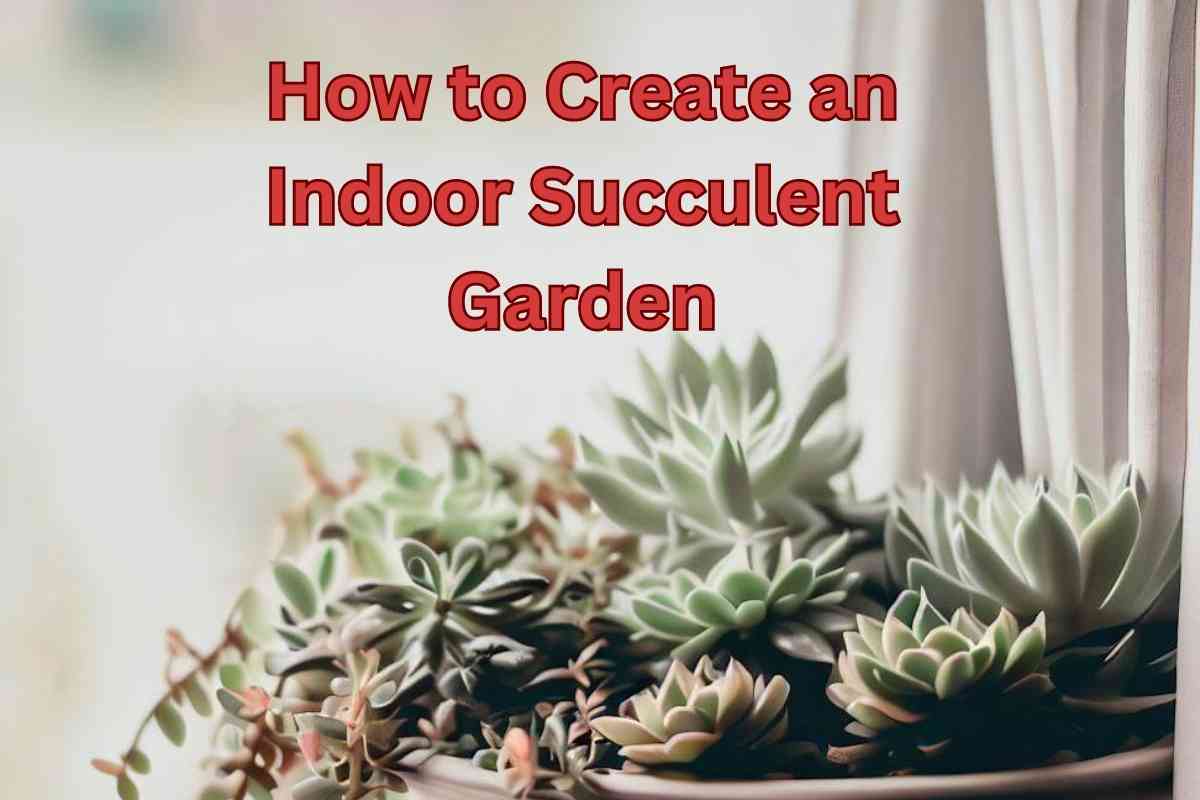
I absolutely adore the art of combining my succulents into captivating miniature indoor gardens! Succulents are ideal for these creations because of their shallow roots and slow growth rates.
It’s much easier to water, fertilize, and do pest control on one planter than many, AND succulents just look so great mixed together. Here’s how to create an indoor succulent garden, step by step.
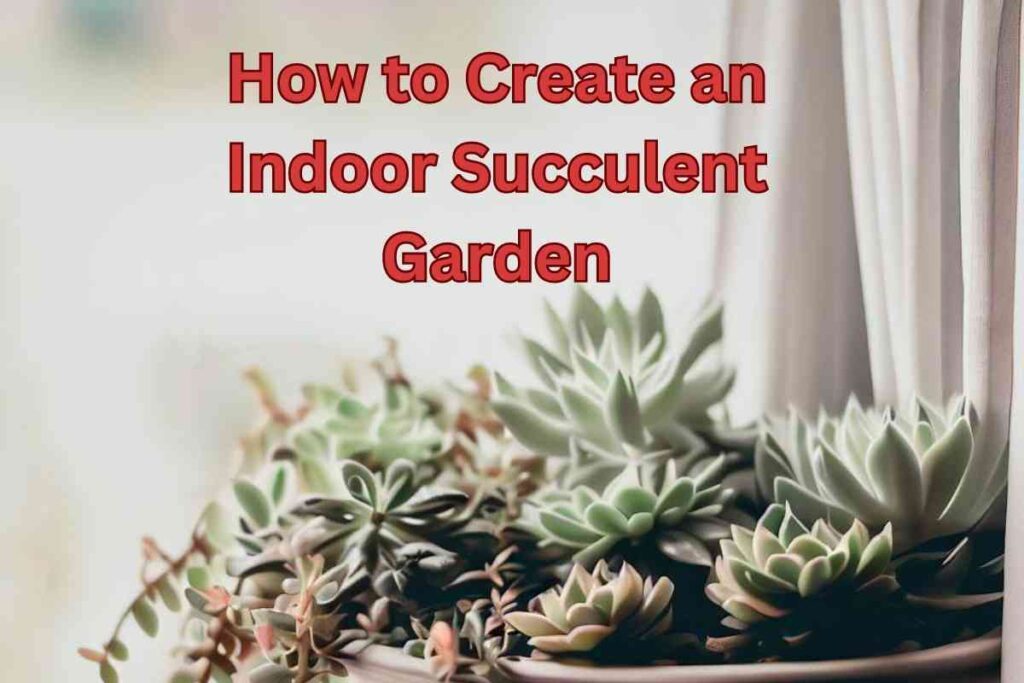
How do I create an indoor succulent garden?
To create an indoor succulent garden, choose visibly interesting succulents that have similar growth rates and lighting needs. Make sure to choose focal plants and filler plants, and plant in a shallow container in well-draining soil. Rotate the container regularly to avoid uneven growth.
Step-by-step, I’ll guide you through the process of crafting your very own small indoor succulent garden. We’ll cover everything from sourcing and choosing succulents, to how to make an aesthetically pleasing arrangement, to caring for it once it’s a focal piece in your home.
I’ll cover some care tips here, but make sure to bookmark this essential indoor succulent care guide so you’ll have all of the information you need to keep your indoor succulent garden healthy and vibrant.
Failed to keep succulents alive inside before? It’s ok. Me too. This beginner’s guide to indoor succulents will tell you what you did wrong and how to be sure you don’t make the mistake again.
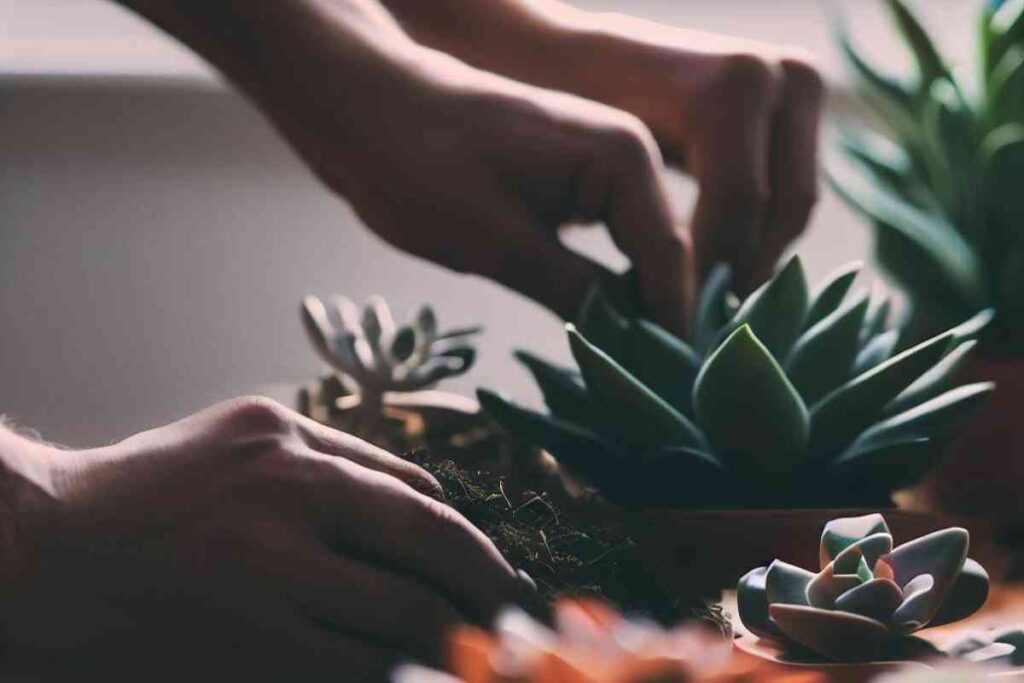
Choosing the Right Succulents
When it comes to acquiring succulents for your captivating indoor dish garden, you have a plethora of options to explore. These charming plants come in a remarkable array of shapes, sizes, and colors and are readily available online and at garden centers.
Where to Get Succulents for an Indoor Dish Garden
Succulents are easy to transport, so you have lots of ways to get them, especially if you’re willing to order calloused leaves. These leaves will develop roots and be ready to plant upon arrival or shortly after.
Reputable online retailers specialize in succulent varieties, offering a wide selection to choose from. With just a few clicks, you can have an assortment of succulents delivered right to your doorstep, ready to be incorporated into your indoor garden.
Another option is to visit your local garden center, where you can find small succulents available for sale. Browsing through the greenery-filled aisles, you’ll discover a delightful assortment of succulent species. These garden centers often provide expert guidance and valuable tips for selecting the perfect succulents for your project. But be prepared to pay a little more for them.
If you already have a collection of succulents, that’s fantastic! You can use the ones you already own for your indoor dish garden. In fact, propagating cuttings from your existing plants can be an excellent way to expand your collection and infuse a personal touch into your creation. Keep in mind that using pups from mature succulents, once they’ve had time to grow out a little, can be especially ideal for this project.
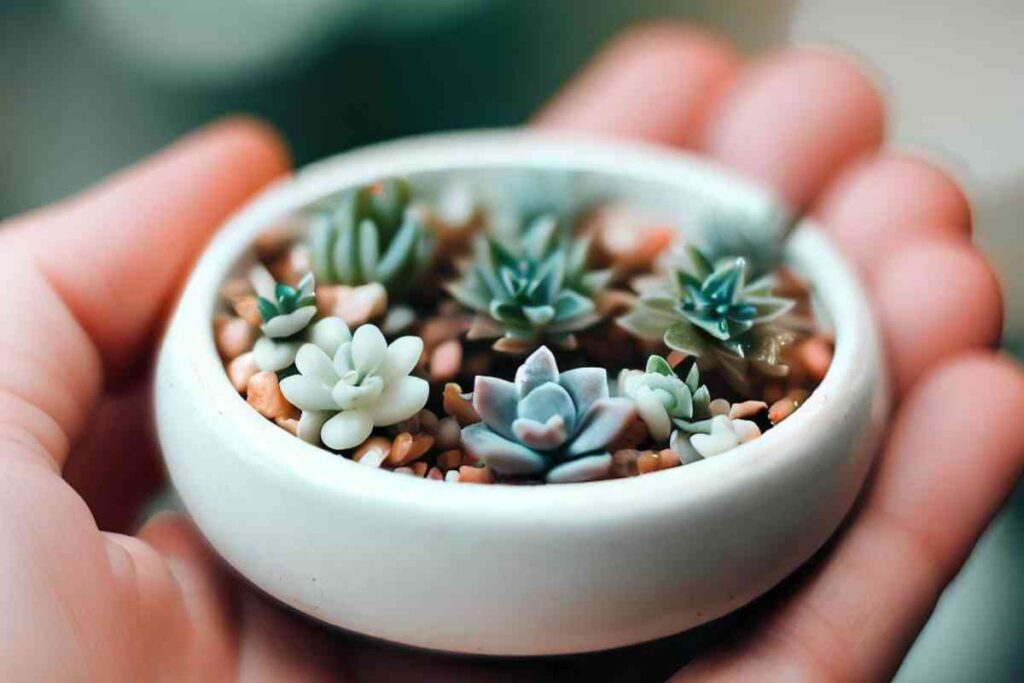
Which Succulents to Choose for an Indoor Succulent Garden
Choose Succulents with Similar Growth Rates
Succulents that tend to grow at a similar pace create harmony and balance within your arrangement. It also means healthy plants that can be repotted at the same time.
Choosing succulents with comparable growth rates ensures no single plant dominates the arrangement or becomes overshadowed by its faster-growing counterparts.
This is especially important if you’re making something to scale, like a succulent fairy garden. The sense of a tiny world can quickly be destroyed by a succulent that grows too quickly.
Selecting succulents with similar growth rates simplifies maintenance and care. It helps to create an even watering and fertilization routine since all the plants in your arrangement will have similar needs.
Choose Succulents that Like the Same Light
Different succulent species have varying light preferences, ranging from full sun to partial shade. By choosing succulents that share similar light requirements, you can create a harmonious environment where all the plants can thrive together.
Placing succulents with different light preferences in the same container can lead to imbalances and issues. For instance, if you combine succulents that prefer bright, direct sunlight with those that thrive in lower light conditions, the more shade-tolerant succulents may suffer from sunburn or discoloration, while the sun-loving ones might become stretched and leggy.
For most succulents, a well-lit spot with bright, indirect sunlight is ideal. This typically translates to placing your indoor dish garden near a window that receives several hours of indirect sunlight each day. South or west-facing windows tend to provide the most intense light, while east or north-facing windows offer slightly lower light levels.
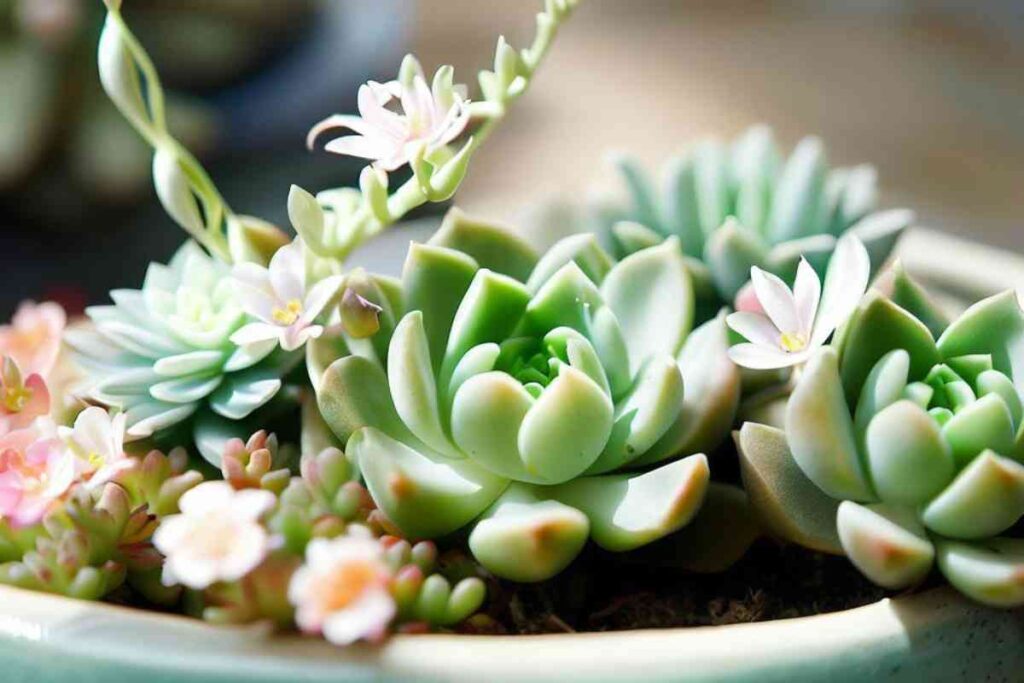
Types of Succulents to Consider
- Echeveria: These rosette-shaped succulents come in a range of colors, from pale green to deep purple. They prefer bright, indirect light and well-draining soil.
- Haworthia: These small, compact succulents have thick, fleshy leaves and come in a variety of shapes and colors. They prefer bright, indirect light and well-draining soil.
- Aloe Vera: This popular succulent is known for its medicinal properties and is easy to care for. It prefers bright, indirect light and well-draining soil.
- Sedum: These trailing succulents come in a range of colors and are great for hanging baskets. They prefer bright, indirect light and well-draining soil.
- Crassula: These small, compact succulents have thick, fleshy leaves and come in a variety of shapes and colors. They prefer bright, indirect light and well-draining soil.
Preparing the Soil and Container
When it comes to creating an indoor succulent garden, soil preparation and container selection are two critical factors to consider. Here are some tips to help you get started.
Soil Preparation
Succulents thrive in well-draining soil, so it’s essential to choose the right type of soil for your indoor garden. You can use a cactus soil mix or create your own by mixing equal parts of sand, perlite, and potting soil. Avoid using regular garden soil, as it retains too much moisture and can lead to root rot.
Before adding soil to your container, ensure that it has drainage holes to prevent water from pooling at the bottom. If the holes are large, cover them with drainage netting or a piece of window screen to keep the soil from washing out.
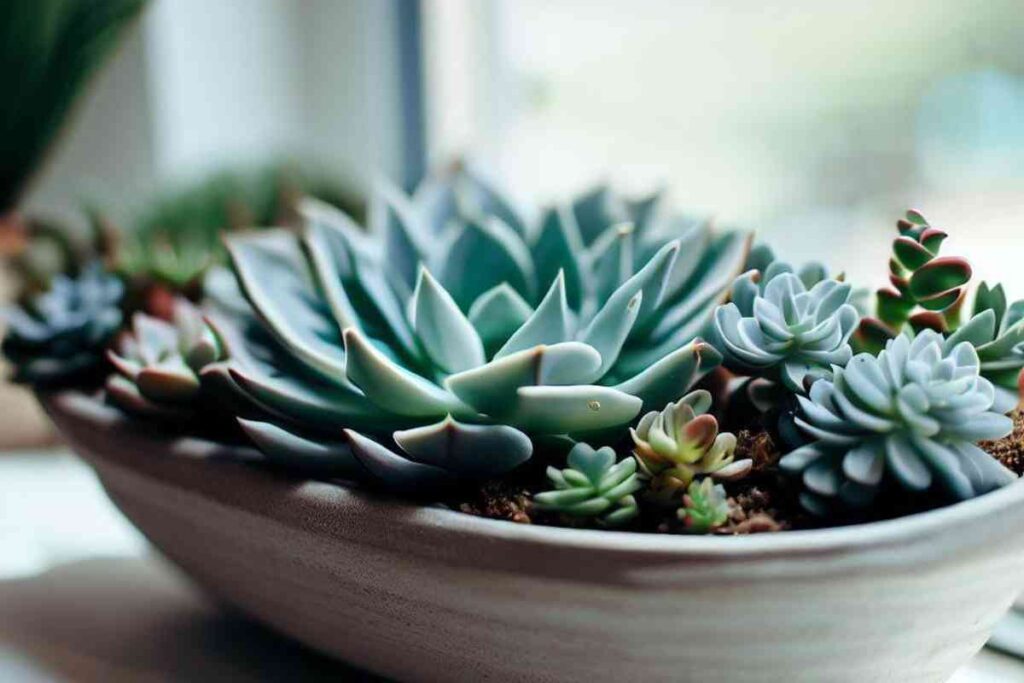
Container Selection
When selecting a container for your indoor succulent garden, consider the size, shape, and depth of the container. Succulents have shallow roots, so a shallow container works best. Additionally, choose a container that is slightly larger than the root ball of your plants. It’s essential that the container have plenty of drainage so no water pools after watering.
Ideally, the best pots for succulents are made of terra cotta. Terra cotta pots are porous, allowing for better air circulation and moisture evaporation. This helps prevent excessive moisture retention, which can be detrimental to succulents as they prefer well-draining soil. The porous nature of terra cotta also allows the roots to breathe and prevents waterlogged conditions that can lead to root rot.
However, if you prefer a more decorative or ornamental look for your indoor dish garden, ceramic pots can work. Just take extra care in maintaining proper drainage and moisture levels.
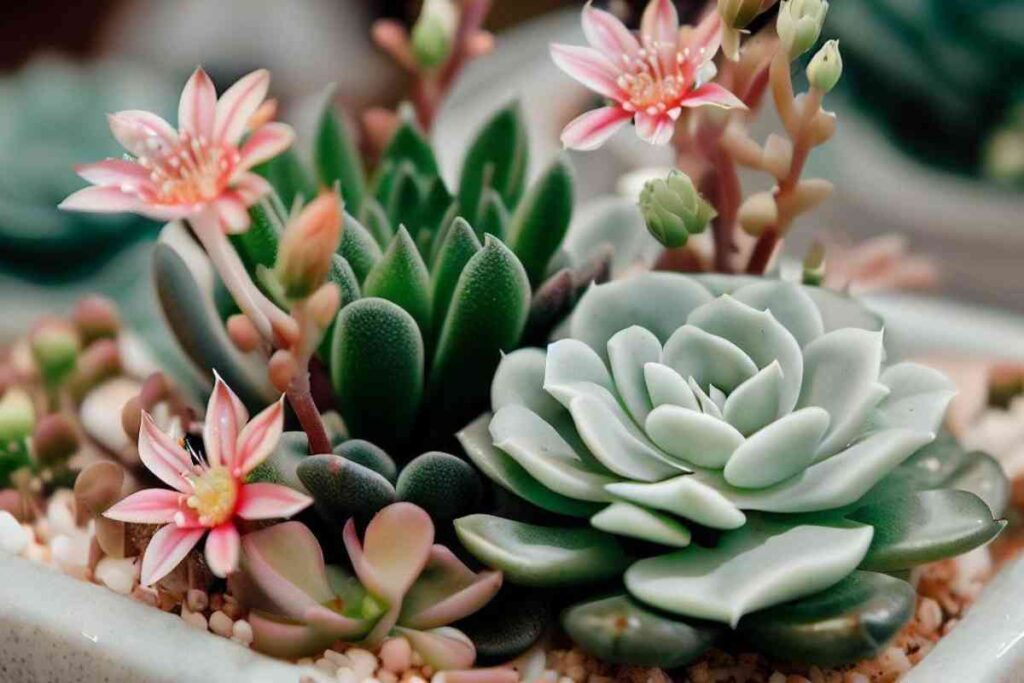
Designing Your Indoor Succulent Garden
Here’s the fun part! Let’s take all of those lovely succulents you’ve so carefully chosen and make a gorgeous garden.
Focal Plants
Focal plants are the stars of your indoor succulent garden and should be chosen with care. These plants will be the center of attention, so look for specimens that are particularly eye-catching. Consider the size and shape of your container when selecting your focal plants; taller plants may be better suited to a planter with a deeper base, while shorter plants can work well in shallow dishes.
Filler Plants
Filler plants are essential for adding texture, color, and variety to your indoor succulent garden. Sedum, Sempervivum, Kalanchoe, Rat Tail Cactus, and Panda Plant are all great options for filling in the spaces around your focal plants. When selecting filler plants, consider the height and shape of each specimen, as well as its color and texture. By choosing a variety of different filler plants, you can create a dynamic and visually interesting display.
Decorating
Decorative elements can add a touch of personality and style to your indoor succulent garden. Consider incorporating decorative rocks, crystals, or figurines to add interest and texture to your display. You can also experiment with different colors and patterns of ceramic pots or dishes to create a cohesive and visually appealing look.
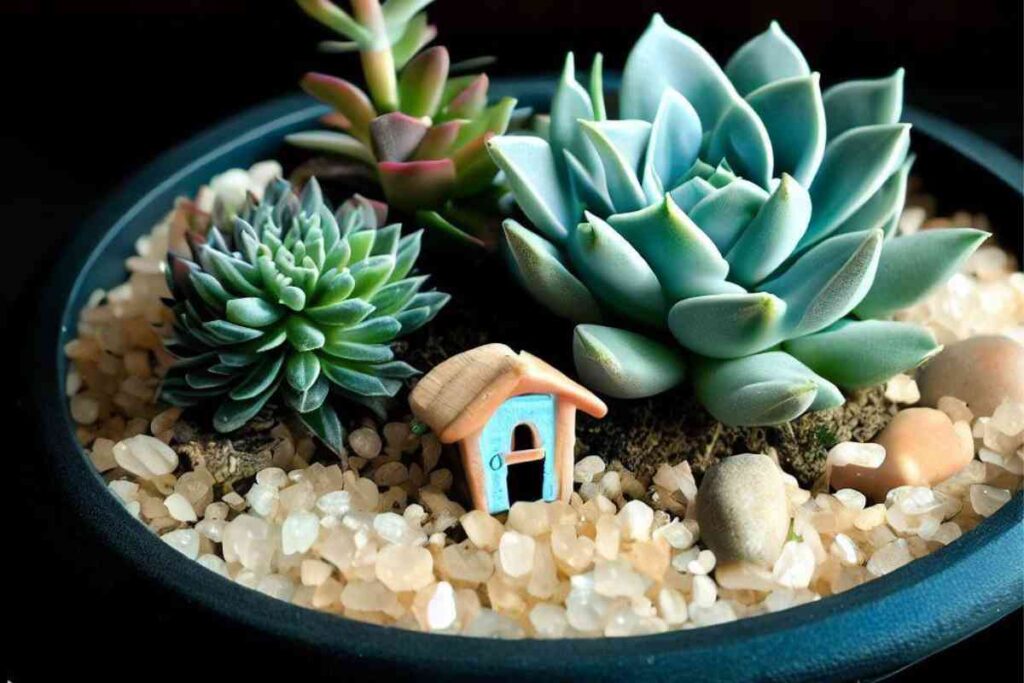
Top Dressing
Top dressing is the final touch that can really make your indoor succulent garden stand out. Use decorative gravel, sand, or stones to cover the soil around your plants and create a polished and finished look. Top dressing can also help to prevent soil erosion and retain moisture, which is especially important in drier indoor environments.
Planting Techniques
- Begin by identifying your focal plant, which is typically the tallest or most eye-catching succulent in your selection. This plant will serve as the centerpiece, anchoring the overall design of your dish garden.
- Work your way outward, considering how different colors, textures, and shapes of succulents can complement and enhance one another.
- Gently nestle the root ball of each plant into the pot, positioning them in the desired arrangement. Avoid overcrowding the plants, as this can hinder their growth and airflow. Instead, aim for a visually pleasing composition with enough space for each succulent to thrive.
- Use a chopstick or a similar tool to settle the soil gently around the roots. Take care not to push down too firmly on the soil or roots. Instead, employ a light touch, encouraging the soil to fill in the gaps naturally.
- To further ensure the soil settles evenly, you can gently tap the dish against a surface, such as a table or counter. This helps the soil to settle around the roots, removing any potential air pockets.
Watering and Maintenance
Watering Techniques
Watering is one of the most crucial aspects of indoor succulent garden care. Overwatering is a common mistake that can lead to root rot and ultimately kill your plants. It’s possible to save a succulent that has no roots, but it shouldn’t be necessary. Succulents are adapted to store water in their leaves and stems, so they don’t need to be watered as frequently as other houseplants.
The best way to water your indoor succulent garden is to use the “soak and dry” method. This means watering your plants thoroughly until water runs out of the drainage holes in the bottom of the pot. Wait until the soil is completely dry before watering again. The frequency of watering will depend on the temperature, humidity, and light conditions in your home.
Another technique that can be useful for indoor succulent gardens is bottom watering. This involves placing the pot in a shallow tray filled with water and allowing the soil to absorb the water from the bottom up. This method can help prevent overwatering and is especially useful for plants that are prone to rot.
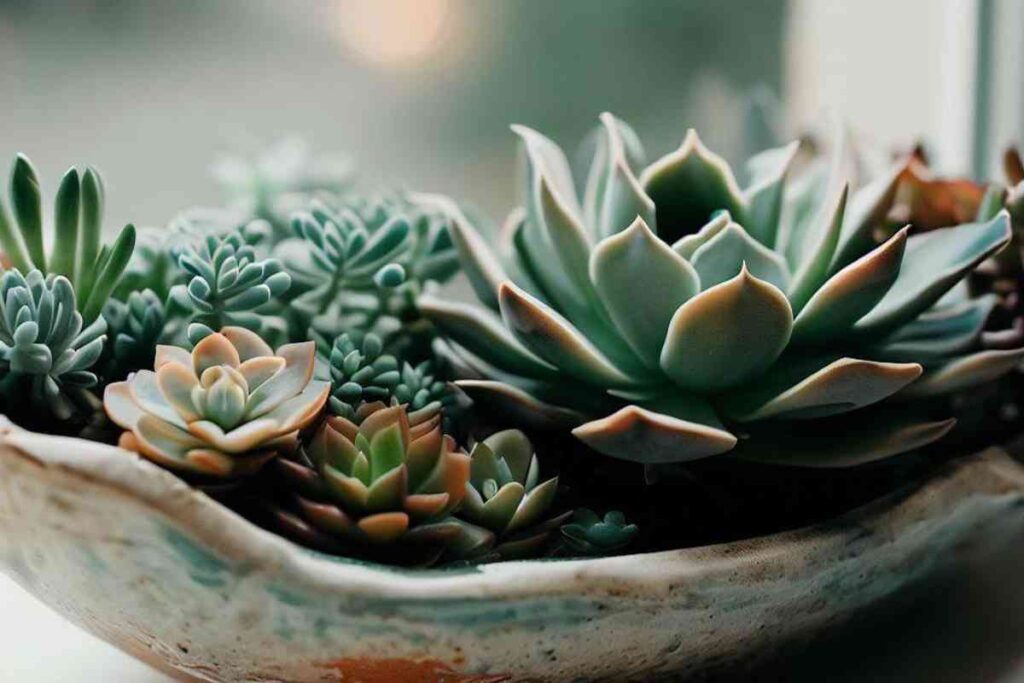
Maintenance Tips
Indoor succulent gardens require less maintenance than other houseplants, but there are still a few things you can do to keep them healthy and thriving. Here are some maintenance tips:
- Fertilize sparingly: Succulents don’t need a lot of fertilizer, and too much can actually harm them. Use a balanced fertilizer once or twice a year during the growing season.
- Monitor for pests and diseases: Indoor succulent gardens are generally less susceptible to pests and diseases than outdoor gardens, but it’s still important to keep an eye out for any signs of trouble. Common pests include mealybugs, spider mites, and scale insects. If you notice any pests or signs of disease, isolate the affected plant and treat it promptly.
- Prune as needed: Succulents don’t require much pruning, but you can remove any dead or damaged leaves or stems to keep the plant looking tidy. Leaves or stems can also be pruned for aesthetic reasons and used to grow new succulents.
- Rotate plants: Succulents tend to grow towards the light, so it’s a good idea to rotate your plants every few weeks to ensure even growth.
Light and Sun Exposure
Most succulents require at least 6 hours of bright, direct sunlight per day to thrive. However, some succulents can tolerate less sunlight and even grow well in low-light conditions. It’s important to understand the sunlight requirements of the specific succulent species you’re growing to ensure their optimal growth.
Here are some general guidelines for succulent sunlight requirements:
- Full Sun: Succulents that require full sun need at least 6 hours of direct sunlight per day. These succulents include Adenium, Agave, and Aloe.
- Bright Light: Succulents that require bright light need 4-6 hours of direct sunlight per day. These succulents include Haworthia, Gasteria, and Rhipsalis.
- Low Light: Succulents that can tolerate low-light conditions can grow with just natural light from a window. These succulents include the Snake Plant, the ZZ plant, and the Jade plant.
Grow Lights: If you don’t have access to natural light or your succulents require more light than your window can provide, you can supplement with grow lights. Grow lights can provide the necessary light spectrum and intensity for your succulents to grow and thrive.
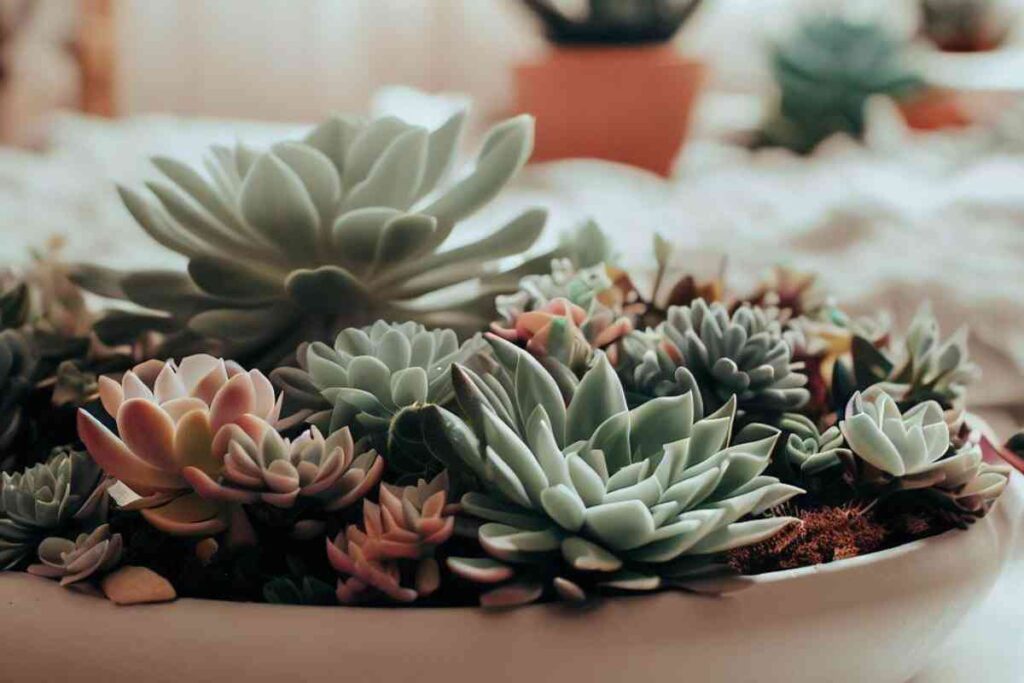
It’s important to note that succulents can get sunburned if they receive too much direct sunlight. If you notice brown or white spots on your succulent’s leaves, it may be getting too much sunlight. Move the succulent to a shadier spot or provide some shade with a sheer curtain.
Where will you be displaying your succulent dish garden? If you want the peaceful presence of the desert in your bedroom, make sure you check out this guide on the best succulents for the bedroom.
Want to create a miniature succulent garden? Here are some ideas for mini succulent gardens sure to inspire your creativity.
